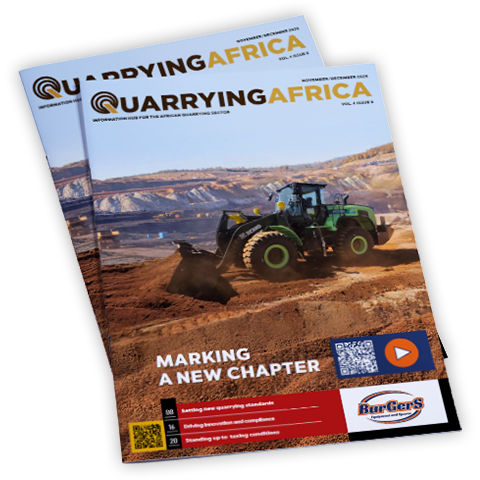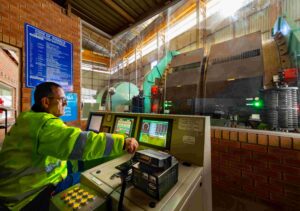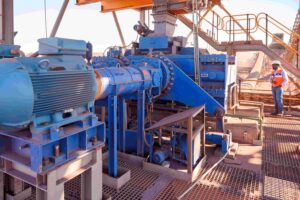Cement & Concrete South Africa’s (CCSA) concrete CO₂ model is facilitating the design of concrete mixes with a smaller carbon footprint.
Used by, among others, cement manufacturers, ready-mix producers, consulting engineers and architects, CCSA’s CO2 model calculates the carbon-dioxide equivalent (CO₂e) associated with the production of a cubic meter (m³) of concrete.
This is determined according to a user-defined concrete mix design. Users of the model select the type of cement deployed in their mix and the end application for concrete. These include, inter-alia, roof tiles, bricks, precast-concrete elements or cast-in-place construction methods.
“Our concrete CO₂ model provides a reliable means of calculating the embodied energy of concrete. This has become a top priority for responsible built-environment professionals who are committed to reducing greenhouse-gas (GHG) emissions of this widely used construction material. Using our model, they are making more informed decisions regarding concrete for their projects,” Gary Theodosiou, technical consultant to CCSA, says.
Certainly, CCSA’s concrete CO₂ model also raises awareness of “green” concrete, as well as facilitates and recognises environmental leadership in the design and application of the construction material. This is in line with CCSA’s focus on the sustainable use of concrete. Just as importantly, it also provides client bodies and their professional teams with a method of accurately comparing concrete’s embodied energy with that of competing construction materials.
In developing a reliable CO₂ emissions inventory, all components of concrete were considered. These include actions, namely transportation and mixing. This is in addition to the various concrete components, including admixtures; aggregates; CEM I cement; fly ash and ground-granulated blast-furnace slag (GGBS) – both often referred to as extenders – water; and steel reinforcing.
A primary focus for CCSA was to quantify the energy consumption involved in each activity and component. This is considering the large contribution that this function, alone, makes to the carbon footprint of the various actions and components linked to concrete production. The only exception is the cement industry where as much as 50% of emissions are generated from the calcination/decomposition of limestone in kilns. Electricity and fuel consumption make up the balance of the cement industry’s carbon footprint.
CCSA defines these emissions according to the internationally recognised GHG Protocol. It is also used by the World Business Council for Sustainable Development’s approved cement emission model, which was developed further and refined to make it more relevant to concrete by CCSA.
The embodied carbon of eight concrete mixes with a 30 MPa strength were compared. All of these mixes incorporated a CEM I base cement and were designed with and without admixtures for comparative purposes. Moreover, to evaluate the effects of fly ash, GGBS, admixtures, aggregates and water demand on CO₂ emissions, raw material amounts were varied in each concrete mix design.
Theodosiou says that CSSA’s concrete CO₂ model demonstrates that the carbon footprint of concrete can be reduced in three ways. This is by using a cement extended with fly ash or GGBS; an admixture; or a good quality aggregate and sand with a low water demand.
When plasticizer admixtures are introduced to a CEM I mix design, water demand is reduced by 10%, resulting in a 17,6% decline in cement requirement. Overall, the use of admixtures lowers CO2 emissions by 16%.
Fly ash can reduce associated emissions by 23%. When used with an admixture, concrete emissions can be reduced by a further 15%, resulting in a 38% decrease in the embodied energy of concrete.
The inclusion of GGBS in the concrete mix can lower CO₂ emissions by between 36% and 45% when used with an admixture. This is achieved by replacing up to 50% of cement in the concrete mix with GGBS.
CCSA also tested a concrete mix with decomposed granite sand as an aggregate input. This was to demonstrate the extent of the influence that the type of aggregate used has on the carbon footprint of concrete. A decomposed granite sand mix has a high-water requirement (240 l/m³) of 76% or more. Therefore, this leads to an increased cement requirement of 53%, in turn, raising the concrete carbon footprint by 36%.
“Considering its many benefits, concrete remains the preferred material for a myriad of construction projects. Therefore, it is also the most consumed material after water, with the average consumption of concrete about one ton per year for every person on earth. Bearing in mind the sheer size of the South African concrete construction industry, alone, the prudent use of this building material can have a significant positive impact on global carbon emissions,” Theodosiou concludes.
This model can be accessed on the CCSA website: https://cemcon-sa.org.za/information-hub/concrete-tools/concrete-model/






